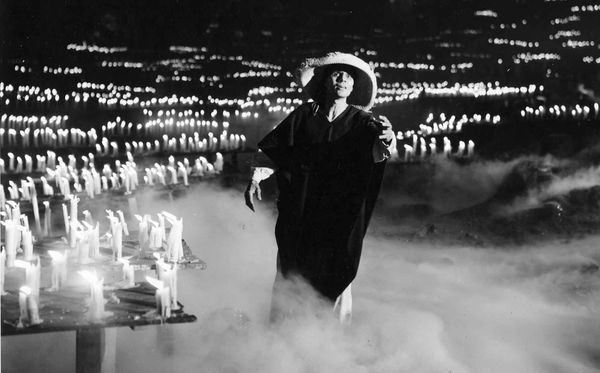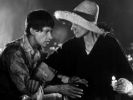Eye For Film >> Movies >> Macario (1960) Film Review
Macario
Reviewed by: Rebecca Naughten

Set in 18th century colonial Mexico and based on a story by B Traven (best known for The Treasure Of The Sierra Madre), Macario is an early onscreen example of a magic realist fable and, in 1961, became the first Mexican film to be nominated for an Oscar. Macario (Ignacio López Tarso) is a woodcutter and head of a loving but perpetually hungry family. Frustrated by his constant hunger - and of giving his own share to his children - Macario vows not to eat again until he can eat a whole turkey without having to share it.
When Macario's wife (Pina Pellicer) successfully acquires a turkey to fulfil his whim, he is approached by three individuals in turn, including the Devil and God, who either try to tempt or implore him into giving up the dreamed-of meal. Macario quick-wittedly (one of the surprises of the film is the sharpness and humour of the protagonist) offers counterarguments but agrees to share his meal with the final man (Enrique Lucero) who the woodcutter has correctly surmised is Death - by sharing the food he hopes to delay his death long enough to enjoy the turkey. In fact Death - tickled by Macario's reasoning - rewards his generosity with a magical liquid that can restore people to good health. Macario's newfound healing powers allow him to support and feed his family properly as people travel far and wide to pay for his assistance, but they also attract the attention of the Inquisition.

Roberto Gavaldón was one of the key directors of the Golden Age of Mexican cinema. He had a number of recurring themes in his films (although he worked across a range of genres) of which Macario centres on an obsession with death that is shown as both a personal preoccupation and a mythical part of Mexican national identity. Even before Death appears in the film - and he continues to appear to Macario throughout the narrative - there are multiple conversations about death (the candlemaker tells Macario that "We have to be nice to the dead... we spend more time dead than alive"), not least because the film opens on the Mexican Day of the Dead with the village festooned with skeletons and sugar skulls. This sense of the macabre continues in the form of the skeletal puppets that haunt the woodcutter's dreams and in the persuasive methods of the Holy Order.
The film feels surprisingly modern but never anachronistically so. The camera angles and the overall style of the imagery seem unusual for a film of the period - or perhaps it is more accurate to say that the style (especially in the dream sequences) is unexpected for a film set in the period that it is. Not having seen any of Gavaldón's other films, it is difficult to say where the balance of credit for this lies between he and cinematographer Gabriel Figueroa, although the film bears all the hallmarks of the latter's best work. This includes the justly famous sequence in which Macario enters Death's cavern and is confronted by the whole of humanity manifested as a sea of candles with each candle representing a life - it is a magical and captivating image that lingers long in the mind.
Screening at Edinburgh Film Festival on a pristine 35mm print as part of the Focus on Mexico strand in conjunction with the Year of Mexico in the UK, Macario is worth seeking out if it travels elsewhere.
Reviewed on: 25 Jun 2015















